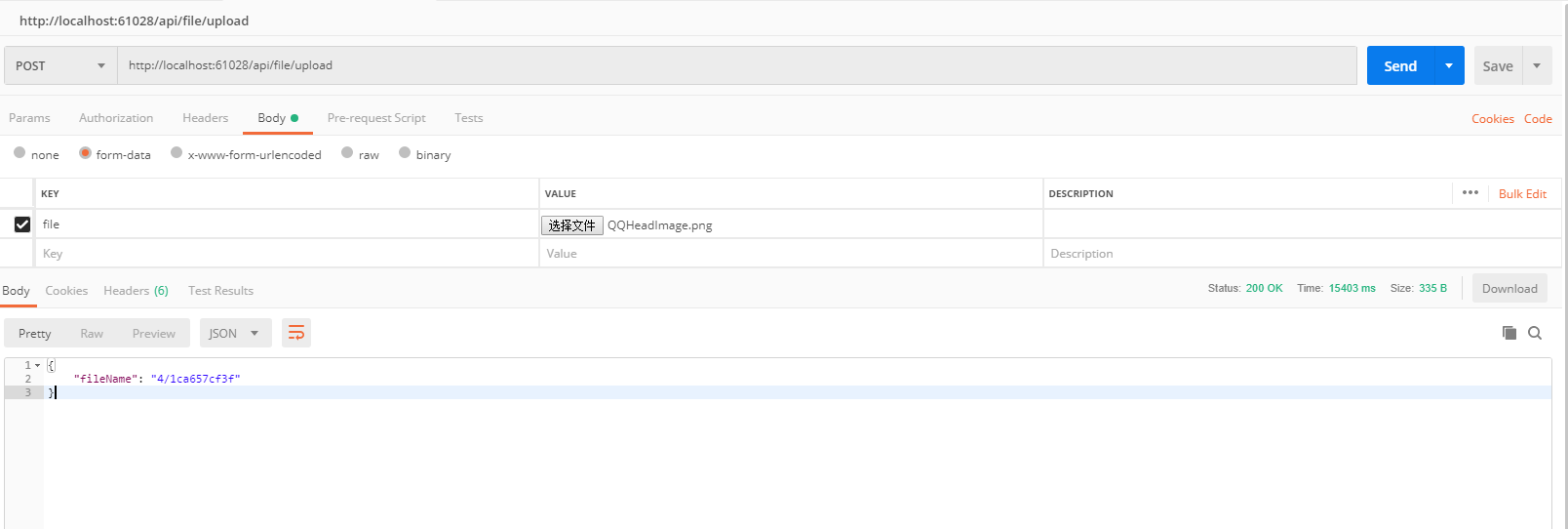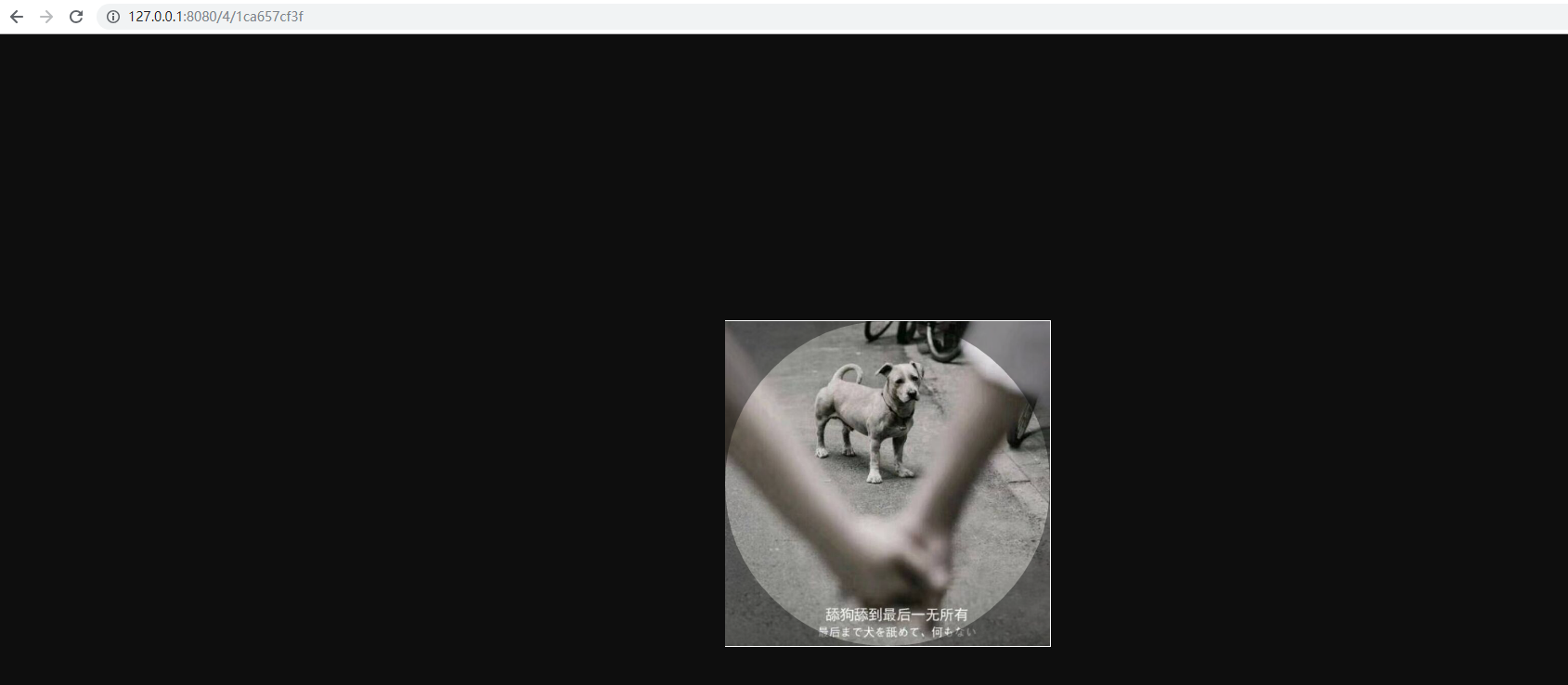SeaweedFS在.net core下的实践方案
一直对分布式的文件储存系统很感兴趣,最开始关注淘宝的TFS(Taobao File System),好像搁浅了,官方地址无法访问,github上面,各种编译问题,无意间发现了SeaweedFS
测试了一番,写个应用的文章和.net core实践的短文分享一下
SeaweedFS如何使用
SeaweedFS的Releases下面下载成品,1.20(主要原因是懒,不想去编译)
运行命令
weed master
再挂载两个分布的服务
weed volume -dir="D:/FileService/Volume/1" -max=1000 -mserver="localhost:9333" -port=8080
weed volume -dir="D:/FileService/Volume/2" -max=1000 -mserver="localhost:9333" -port=8081
我们在访问一下
http://localhost:9333/dir/assign
返回可能是这样的内容
{"fid":"1,1642d6a0d7","url":"127.0.0.1:8081","publicUrl":"127.0.0.1:8081","count":1}
我们解释一下
fid是我们需要的上传的参数
publicUrl是我们实际上需要上传的地址
我们这次上传的目标地址是
http://publicUrl/fid
http://127.0.0.1:8081/1,1642d6a0d7
上传的参数file是对应的文件,上传类型是form-data,就是标准的html表单提交方式
返回你的类型可能是
{ "name": "150106109346115258.jpg", "size": 206354, "eTag": "9e663632" }
这个etag,经常做web缓存的人,肯定不陌生,http缓存的策略
访问地址则为
http://127.0.0.1:8081/1,1642d6a0d7
http://127.0.0.1:8081/1/1642d6a0d7
http://127.0.0.1:8081/1/1642d6a0d7/150106109346115258.jpg
SeaweedFS支持多数据中心,这个在官方github有提到,SeaweedFS自带健康检查,内部走的GRPC做健康检查,所以请保持分布的服务端口,外界可访问,无论是docker还是虚拟机、VPS,最终上传还是走的那个端口
.Net Core下的实践
我们先把两个返回的实体对象做一下
public class SeaweedFSDirAssignModel { public string Fid { get; set; } public string Url { get; set; } public string PublicUrl { get; set; } public int Count { get; set; } }
public class SeaweedFSUploadResponse { public string Name { get; set; } public int Size { get; set; } public string ETag { get; set; } }
我们再根据这两个实体,设计一个上传服务
public interface IFileService { Task<SeaweedFSDirAssignModel> GetUploadFileUrlAsync(); Task<SeaweedFSUploadResponse> UploadFileAsync(string url,byte[] context); }
再设计一个注入的参数
public class SeaweedFSServiceConfiguration { public string BaseUrl { get; set; } = "localhost:9333"; public string DirAssign { get; set; } = "/dir/assign"; }
DirAssign这个是默认的参数,如果要用数据中心的话,这个就可以自定义修改了
public class SeaweedFSService : IFileService { private SeaweedFSServiceConfiguration Configuration { get; } public SeaweedFSService(IOptions<SeaweedFSServiceConfiguration> options) { Configuration = options.Value; } public async Task<SeaweedFSDirAssignModel> GetUploadFileUrlAsync() { using (var client = HttpClientFactory.Create()) { var url = $"http://{Configuration.BaseUrl}{Configuration.DirAssign}"; var response = await client.GetAsync(url); var body = await response.Content.ReadAsStringAsync(); var json = JsonConvert.DeserializeObject<SeaweedFSDirAssignModel>(body); return json; } } public async Task<SeaweedFSUploadResponse> UploadFileAsync(string url, byte[] context) { using (var client = HttpClientFactory.Create()) { using (var multipartContext = new MultipartFormDataContent()) { multipartContext.Add( new ByteArrayContent( context ), "file" ); var fileUrl = $"{url}"; var response = await client.PostAsync(fileUrl, multipartContext); var body = await response.Content.ReadAsStringAsync(); var json = JsonConvert.DeserializeObject<SeaweedFSUploadResponse>(body); return json; } } } }
在Startup.cs的注入一下
public void ConfigureServices(IServiceCollection services) { services.AddMvc().SetCompatibilityVersion(CompatibilityVersion.Version_2_1); #region 注入服务 services.Configure<SeaweedFSServiceConfiguration>(options=> new SeaweedFSServiceConfiguration()); services.AddScoped<IFileService, SeaweedFSService>(); #endregion }
测试文件上传
先写一个扩展方法,我们希望看见的返回地址是
http://127.0.0.1:8081/1,1642d6a0d7
http://127.0.0.1:8081/1/1642d6a0d7
这个地址的后者
实现如下
internal static class SeaweedFSDirAssignModelExtension { public static string ToFileName(this SeaweedFSDirAssignModel response) { var splits = response.Fid.Split(",".ToCharArray(), StringSplitOptions.RemoveEmptyEntries); if (splits.Length != 2) throw new ArgumentException($"String Split Fail, value:{response.Fid}"); return $"{splits[0]}/{splits[1]}"; } }
写一个控制器测试上传
构建一下返回参数和入参
public class UploadFileResponseModel
{
public string FileName { get; set; }
}
public class UploadFileRequestModel
{
public IFormFile File { get; set; }
}
控制器代码如下
[Route("api/[controller]")] [ApiController] public class FileController : ControllerBase { private IFileService FileService { get; } public FileController(IFileService fileService) { FileService = fileService; } [HttpPost("Upload")] public async Task<UploadFileResponseModel> Upload([FromForm]UploadFileRequestModel param) { #region IO读取 var stream = param.File.OpenReadStream(); var bytes = new byte[param.File.Length]; await stream.ReadAsync(bytes, 0, bytes.Length); #endregion var fileInfo = await FileService.GetUploadFileUrlAsync(); var url = $"http://{fileInfo.PublicUrl}/{fileInfo.Fid}"; var uploadResponse = await FileService.UploadFileAsync(url, bytes); return new UploadFileResponseModel() { FileName = $"{fileInfo.ToFileName()}" }; } }
我们用postman测试一下

ok,上传成功,我们访问
http://localhost:9333/4,1ca657cf3f
http://localhost:9333/4/1ca657cf3f
http://127.0.0.1:8080/4,1ca657cf3f
http://127.0.0.1:8080/4/1ca657cf3f
前面两个地址会转跳到后面两个地址

后记
我这代码测试,会出现,不返回name字段的情况
{
"name": "150106109346115258.jpg",
"size": 206354,
"eTag": "9e663632"
}
这种json格式是直接上传的返回
但是我们这个上传服务会变成
{
"size": 206354,
"eTag": "9e663632"
}
我见了鬼了,谁有发现原因,请告诉我一下,拜托了






【推荐】国内首个AI IDE,深度理解中文开发场景,立即下载体验Trae
【推荐】编程新体验,更懂你的AI,立即体验豆包MarsCode编程助手
【推荐】抖音旗下AI助手豆包,你的智能百科全书,全免费不限次数
【推荐】轻量又高性能的 SSH 工具 IShell:AI 加持,快人一步
· 10年+ .NET Coder 心语,封装的思维:从隐藏、稳定开始理解其本质意义
· .NET Core 中如何实现缓存的预热?
· 从 HTTP 原因短语缺失研究 HTTP/2 和 HTTP/3 的设计差异
· AI与.NET技术实操系列:向量存储与相似性搜索在 .NET 中的实现
· 基于Microsoft.Extensions.AI核心库实现RAG应用
· TypeScript + Deepseek 打造卜卦网站:技术与玄学的结合
· 阿里巴巴 QwQ-32B真的超越了 DeepSeek R-1吗?
· 【译】Visual Studio 中新的强大生产力特性
· 10年+ .NET Coder 心语 ── 封装的思维:从隐藏、稳定开始理解其本质意义
· 【设计模式】告别冗长if-else语句:使用策略模式优化代码结构